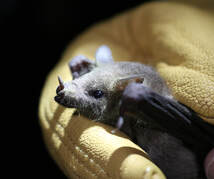 The Lesser Long-nosed bat, a member of the Leaf-nosed bat family. Photo by Jen Schlauch, 2019 The Lesser Long-nosed bat, a member of the Leaf-nosed bat family. Photo by Jen Schlauch, 2019 On a cold night in the Chiricahua Mountains, I shivered while watching two researchers set up a net and begin catching bats. One of the researchers carefully extracted a Lesser Long-nosed bat and brought it over to show us something on its body. Clinging to the thin membrane between its feet were three popcorn kernel-sized insects. Looking closer, I saw hairy creatures, with a little protruding nose similar to the leaf-nosed bat they were on. They were flies, tiny bat flies, getting a free flight through the night. What is a fly doing on a bat, and stranger still, why did the fly look like the bat? As with any animal, there are many parasites that live in and on bats, including mites, bed bugs, earwigs!?, true bugs, and what I found: flies. Three families of flies are adapted to live on bats. Nycteribiidae and Streblidae are small, yellow-orange flies found only on bats. They are ectoparasitic, living on the outside of their hosts, and are the most diverse in the tropics (Guerrero and Morales‐Malacara, 1996). They are both in the superfamily Hippoboscoidea, which includes only hematophagous insects - in other words - they all eat blood. The third family is the exception. The New Zealand bat fly, Mystacinobia zelandica, is part of its own family: Mystanicobiidae. This fly is special in so many ways. They exclusively feed on an endemic bat's poop - the only known bat fly in the world to not eat blood (see NZ bat story in further reading). Further, it is the only insect adapted to live on that endemic Short-tailed bat. As an aside – Short-tailed bats (Mystacina tuberculata) are themselves special, often foraging by tucking their wings and hobbling on the ground like little ancient pterosaurs. 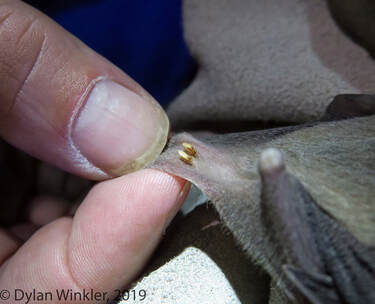 Bat flies, genus Trichobius, on the interfemoral membrane of a Lesser Long-nosed bat. The top fly is actually two, mating Bat flies, genus Trichobius, on the interfemoral membrane of a Lesser Long-nosed bat. The top fly is actually two, mating Back at the Southwestern Research Station, the researchers let us collect the flies off our chilly Lesser Long-nosed bat. All of its little orange parasites turned out to be Streblid flies (one of those blood-sucking bat flies). Streblid bat flies are different from Nycteribiids in a few ways. Nycteribiids are wingless and more spider-like than fly, with a narrow head they can somehow tuck into their thorax! (see Piotr Naskrecki's blog in the further reading). Streblids have either fully developed or reduced wings, may be laterally or dorsoventrally flat, and have a broader head with a leaf-like projection around their mouth (Borror et al., 1989). Streblids seem to have diversified more in the western hemisphere, while Nycteribiids seem more diverse in the eastern hemisphere (Allen, 1939). Jen and I collected the three flies off the interfemoral membrane of the bat (Read my first blog on the Leaf-nosed bats!). New World Streblids are host-specific to one or two bat species, and adapted to particular areas of host body (Bugguide, Mullen and Durden, 2002). Some species of bat fly are adapted to hiding in the fur of bats, others on the wings. They do almost everything on the host, including mate, like two of the flies we observed were doing. 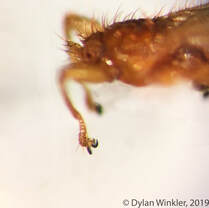 The bat fly Trichobius sphaeronotus, with its sharp curved claws The bat fly Trichobius sphaeronotus, with its sharp curved claws The flies have adapted to their specific living area to avoid the danger of being groomed or eaten off their host. Our bat fly species seems to specialize on the interfemoral and wing membranes of Lesser Long-nosed bats. They have strong claws to hold onto the membranes (patagia) of the bat. Imagine living like the fly, spending your whole life on your meals, in constant dread that your food wants to feed on you. You just might be what you eat. A few species of Streblid flies have been reported on Lesser Long-nosed bats, including Exastinion clovisi, Nycterophilia coxata, and Trichobius sphaeronotus (Martínez et al., 2016). After a couple microscope hours and some serious guesswork, I think the flies we collected were Trichobius sphaeronotus. The genus Trichobius is probably the most commonly reported genus of Streblid flies found in the United States. Over 60 Trichobius species can be found throughout North and South America. As far as I can find, T. sphaeronotus is the only species of Trichobius reported on Lesser Long-nosed bats (although it was found on Mexican Free-tailed bats, see Zeve 1958). Our flies were probably not alone that evening we found them. There may have been more flies in the fur of our bat, and hundreds more hitching rides on winged companies of the night. We still don't know why the fly has a leafnose-shaped snout like its bat. Mycorrhizal fungi make tree-shaped arbuscules inside the roots of the trees they inhabit; some cuckoos lay their eggs in the nest of a host bird with similarly colored eggs. Whether purely coincidence or intricately evolved, stories of a parasite recapitulating its host are endlessly interesting to me. Further Reading New Zealand Bat Fly:https://www.nzgeo.com/stories/batfly Piotr Naskrecki's Bat Fly blog: https://thesmallermajority.com/2014/11/25/mozambique-diary-not-all-flies-fly Also about Nycteribiid Flies: https://www.earthtouchnews.com/wtf/wtf/excuse-me-mr-bat-youve-got-a-huge-parasitic-fly-on-your-face/ References Allen, Glover M. Bats. 1st ed. Harvard Press, 1939. Borror, D. J., C. A. Triplehorn, and N. F. Johnson. An Introduction to the Study of Insects. 6th ed. Saunders College, 1989. Guerrero, R. and J.B. Morales‐Malacara. (1996) Streblidae (Diptera: Calyptratae) parásitos de murciélagos (Mammalia: Chiroptera) cavernícolas del centro y sur de México, con descripción de una especie nueva del género Trichobius. Anales. Inst. Biol. Univ. Nac. Auton. Mexico. Ser. Zool. 67: 357–373. Martínez, M. M., Lopez, M. P., Iñiguez‐Dávalos, L. I., Yuill, T. , Orlova, M. V. and Reeves, W. K. (2016) New records of ectoparasitic Acari (Arachnida) and Streblidae (Diptera) from bats in Jalisco, Mexico. Journal of Vector Ecology, 41: 309-313. doi:10.1111/jvec.12228 Mullen, G. and Durden, L. (2002). Medical and Veterinary Entomology. Academic Press. Reported by Bugguide: https://bugguide.net/node/view/385324 Zeve, V. B. (1958). Notes on the Biology and Distribution of Trichobius in Northwest Oklahoma (Diplera, Streblidae). Proceedings of the Oklahoma Academy of Science for 1958, 44-49.
0 Comments
|
AuthorI was born and raised in Texas, and am working around the United States right now! ArchivesCategories |
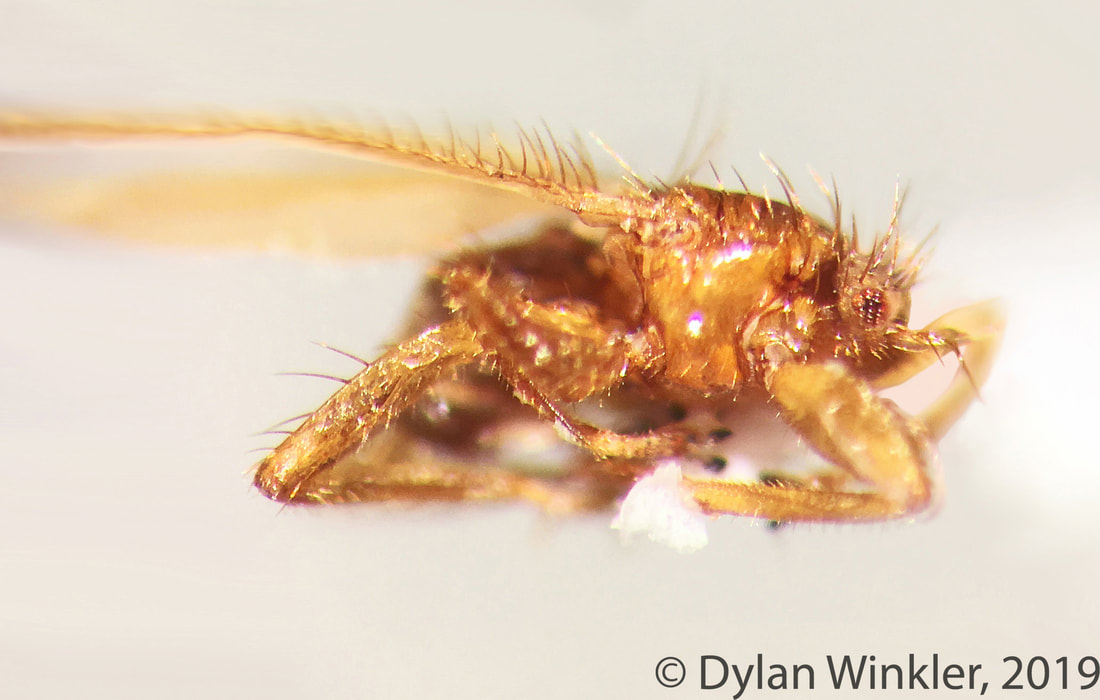
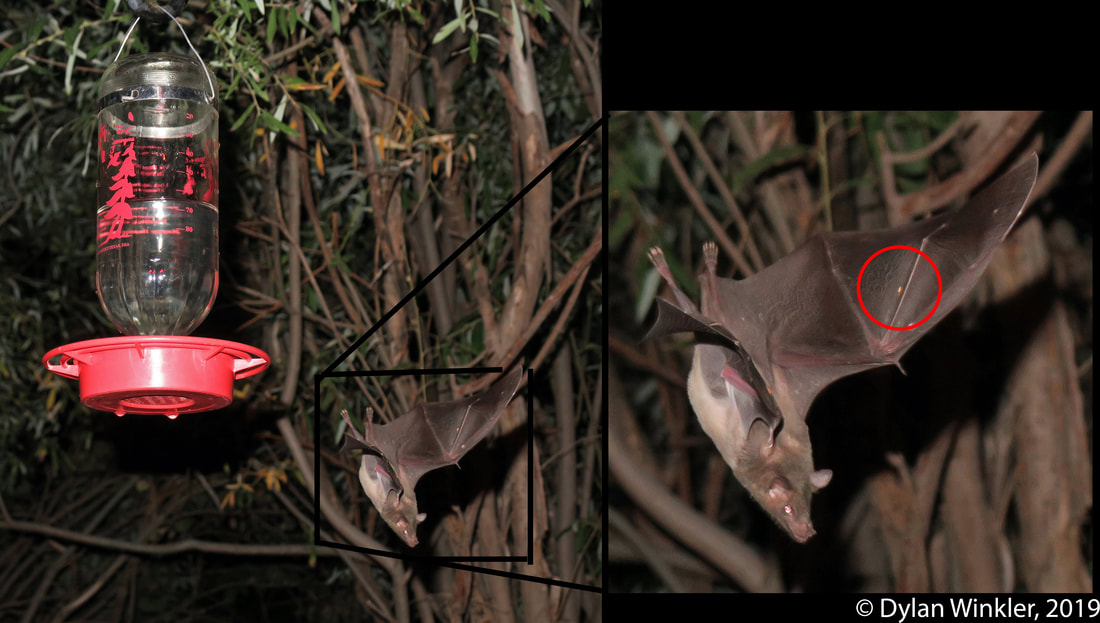
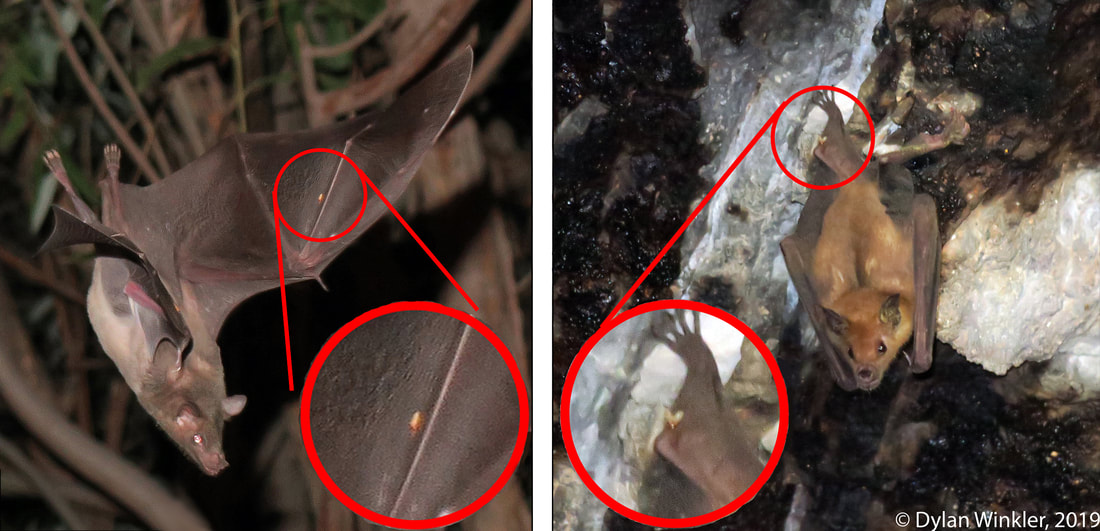
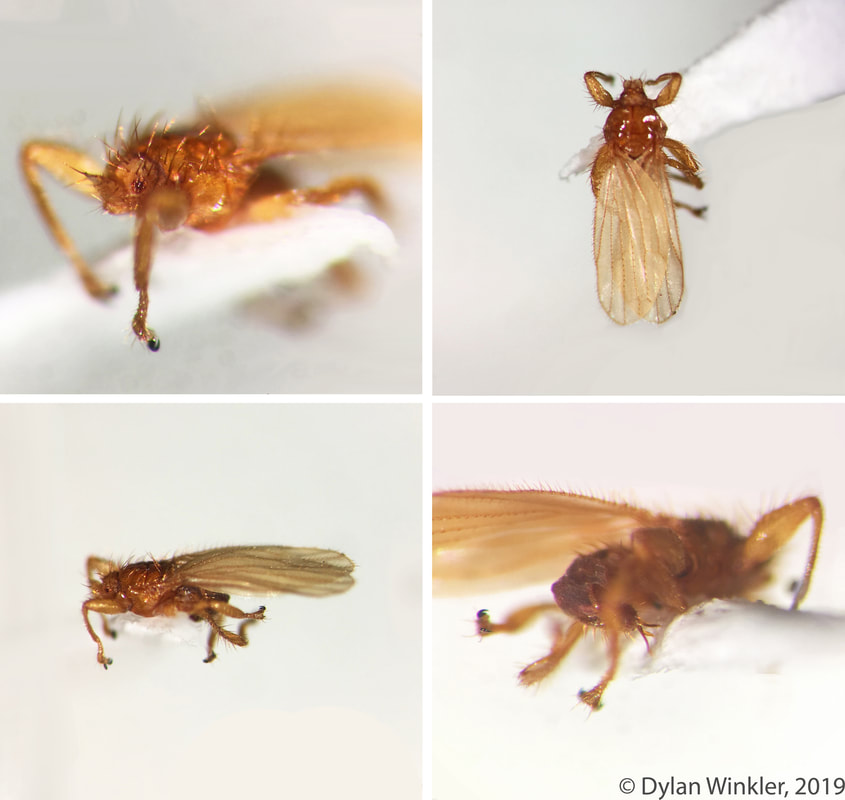
 RSS Feed
RSS Feed
